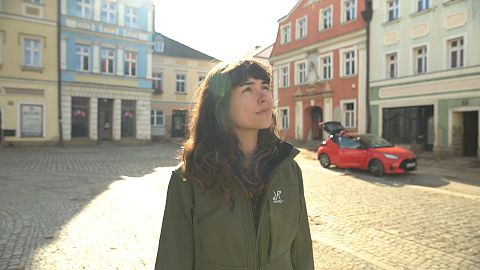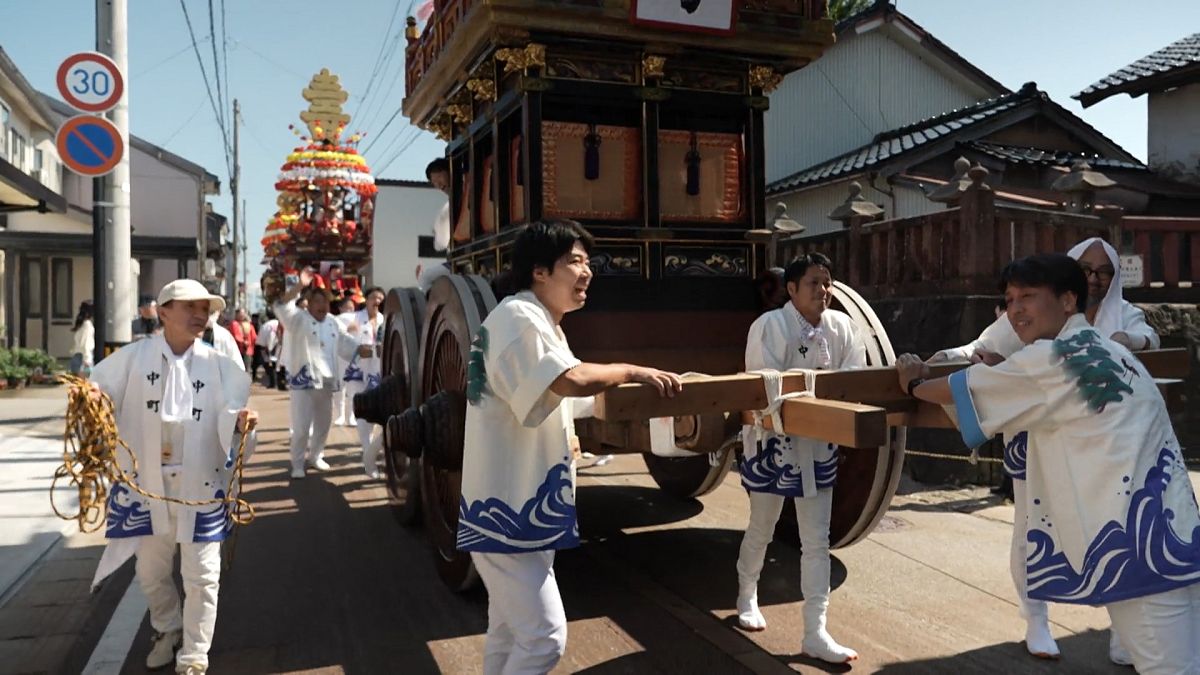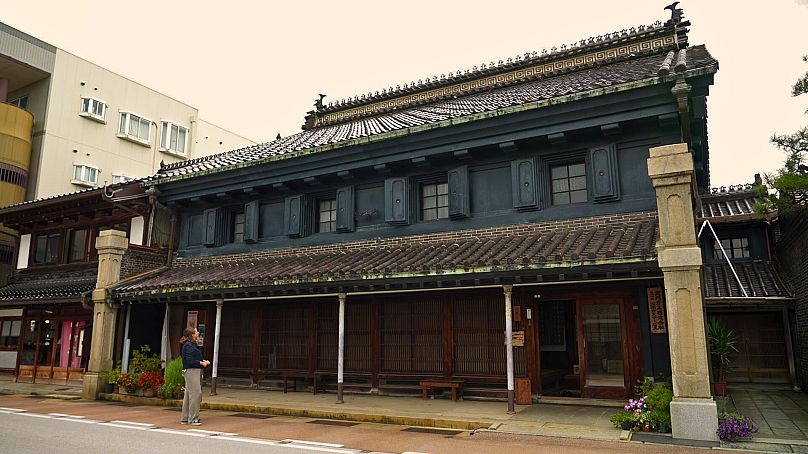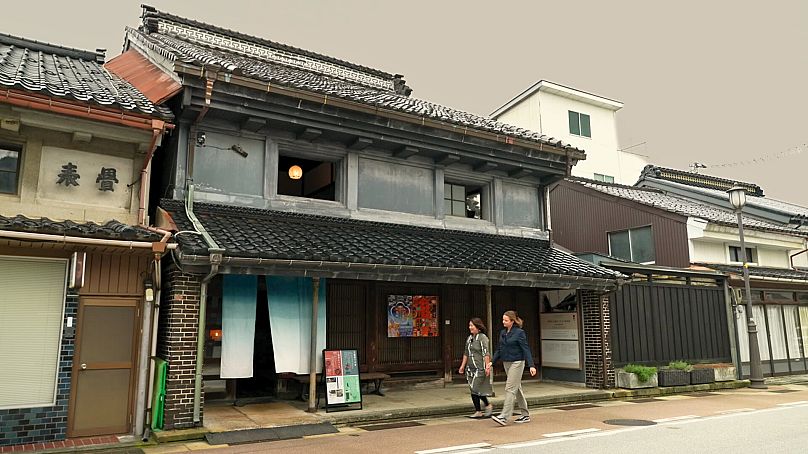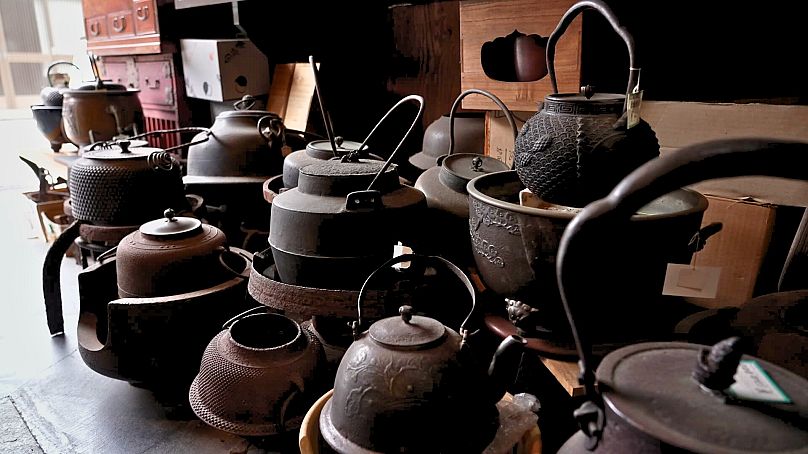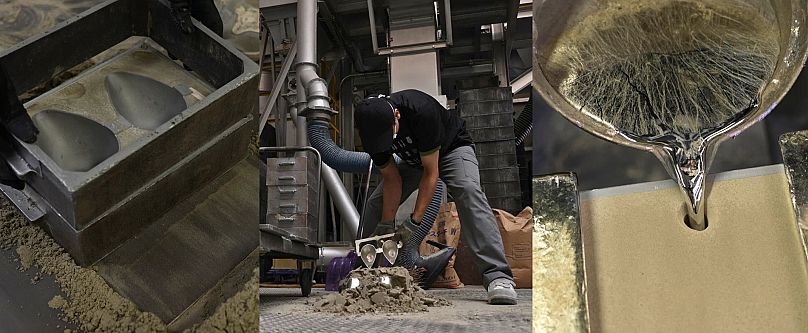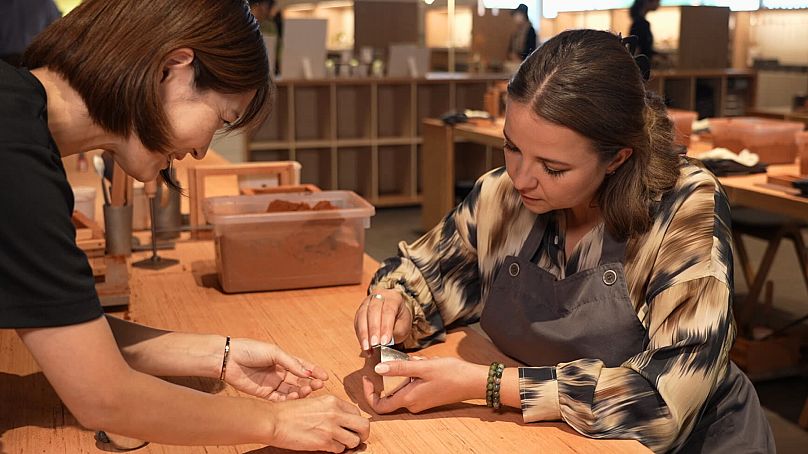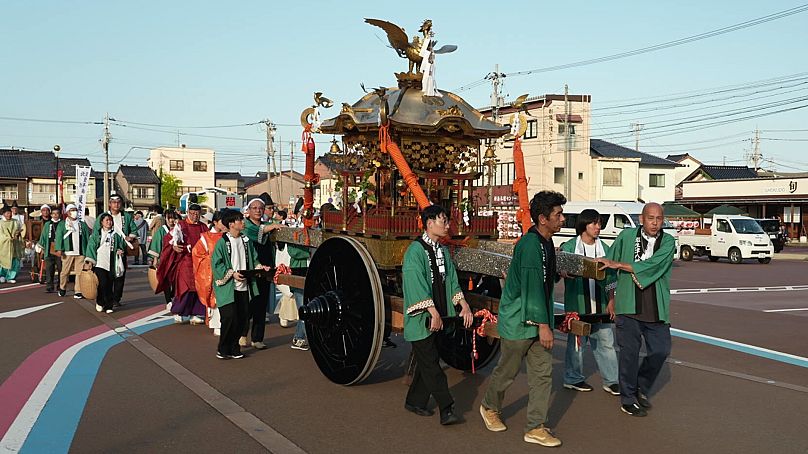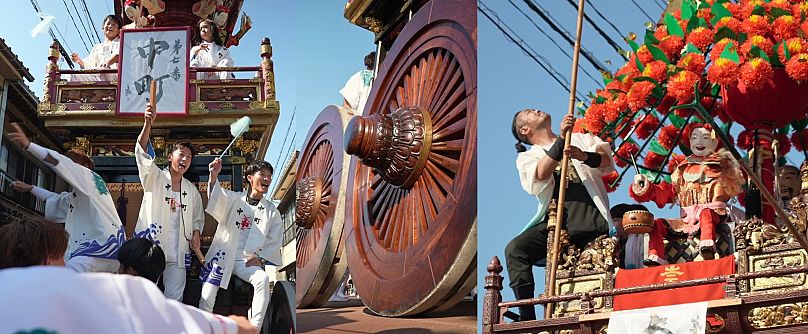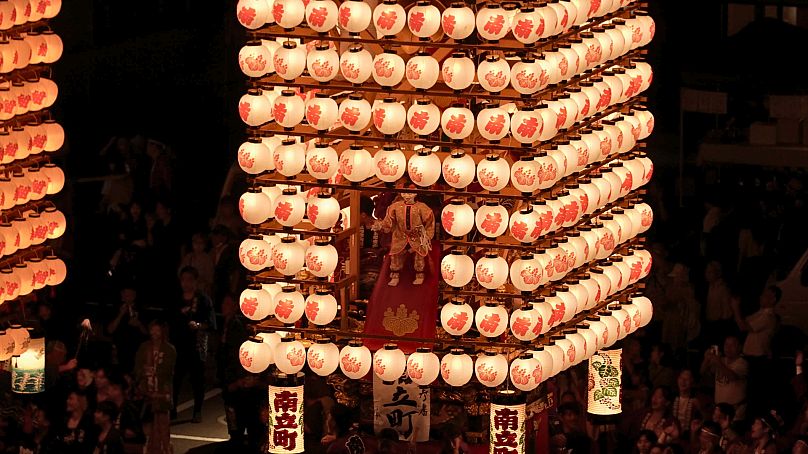In this new episode of Explore Sustainable Japan, we travel across Toyama Prefecture in search of local experiences, from community-led festivals to traditional metal casting workshops.
Nestled between the Sea of Japan and the Hida Mountains, Toyama Prefecture has stunning views, pristine nature and some of the best seafood in Japan. It also has a long history as a hub for manufacturing and trade.
This underrated part of Japan is now easier than ever to get to by train, thanks to the latest extension of the Hokuriku Shinkansen bullet train line, which added six new stations in March 2024.
In this new episode of Explore, we visited some of Toyama’s historic coastal cities to discover how to enjoy the region in a more sustainable way – by supporting traditional crafts and local festivals.
A stroll through Takaoka’s history
The second-biggest city in Toyama, Takaoka was once an important centre for trade and metal casting. Visitors can immerse themselves in this history by strolling through some of the city’s historic streetscapes – like Yamachosuji and Kanayamachi districts.
Yamachosuji district is a testament to Takaoka’s merchant past, where visitors can discover the Dozo-zukuri architectural style and visit several lovingly preserved residences.
Dozo-zukuri style houses are characterised by their thick earthen walls, borrowed from storehouses called dozo, which stored valuables and food. These storehouses were built to protect valuable items from fire, theft and the elements.
After a great fire burnt down 60% of the city in 1900, Takaoka’s wealthy merchants rebuilt their entire homes in this fireproof style to prevent another blaze from damaging their wares.
The Sugano Residence, once home to textile merchants, is the largest of the Dozo-zukuri style houses in Yamachosuji. Today, it’s still inhabited by a local family, but the ground floor is open to tourists.
Pay attention to the facade and you’ll see design details that hint at the merchants’ extraordinary wealth – like the dark plaster used on the walls, pure copper drain pipes and European-influenced columns.
The Takaoka Dozo-zukuri museum is also housed in one of these structures. Here, the entire home is open to visitors and the district’s history is explained by friendly, English-speaking guides like Ayaka Tokai.
Another fascinating townscape to visit in Takaoka is Kanayamachi district, which was once home to the city’s famous copper making industry.
Today, many workshops have been shuttered or forced to move out of the city, but there are still shops where you can buy metal objects, like cast iron pots and home decor.
Traditional Metal Casting at Nousaku Factory
If you want to get a feel for some of Takaoka’s modern metal casting, Nousaku Factory is the place to be.
Founded in 1916, the factory moved from making Buddhist ceremonial objects, to making minimalist home decor and tableware – which have become popular across Japan and overseas. Today, it still uses a traditional method of sand casting.
Factory tours are conducted every day for free, so visitors can get a close look at the painstaking process of hand crafting each metal object, from wind chimes to chopstick holders.
The 100-year-old sand casting technique involves no firing or chemicals. First, wooden moulds are covered in a mixture of sand, oil and water. The mould is then removed and the newly-set sand frame is filled with molten metal.
At the end of the process, the sand is broken down and recycled – and the moulds can be reused countless times. Any damaged item or scrap metal is also melted down and used again.
“We focus on keeping this tradition because it was cultivated in Takaoka City, and we want to pass on this tradition to the next generation,” said Sakina Ota, a tour guide at Nousaku. “We think it’s very important to show our traditional crafts and also the craftsmen working.”
To share this appreciation of traditional sand casting, Nousaku offers a metal casting workshop where visitors can make their own object out of tin, like a sake cup or a small plate.
Celebrating Autumn with locals in Imizu
Every traveller to Japan should try to visit one of the country’s many local festivals. These community-led events are a rare opportunity to witness the contemporary expressions of traditional Japanese customs.
In Imizu, the Hojozu-hachimangu Shrine Festival attracts scores of people from across the region at the start of October to honour the Gods of the sea, who are believed to protect the port city.
Beginning at the Shinto shrine in the town, the festival later moves to the streets – and the local deity even joins in atop a portable shrine, which is paraded at the front of a long procession of 13 Hikiyama floats (representing Imizu’s 13 districts).
These Hikiyama floats are a treasured cultural heritage in Japan, towering structures that are hand-carved, beautifully lacquered, and fitted with enormous wooden carriage wheels.
As they’re pulled through the streets by hand, you can see the incredible teamwork and collaboration needed to get them from Point A to Point B – with young and old pulling and chanting together.
“This formless culture has been passed down through the ages to parents, children and even grandchildren in the form of words and gestures,” said Mitsuhiro Matsuyama, curator of Imizu City Shinminato museum.
There’s even a touch of magic when night falls and the colourful flowers on top of the Hikiyama are replaced with paper lanterns. The soft light from the lanterns bathes the streets in an ethereal glow – and the celebration continues into the night.
To learn more, watch the full episode of Explore Sustainable Japan in the player above.
You might also like

Japanese PM's party loses majority in Parliament

Negros Island: Sugar heritage and marine wonders of the Philippines
